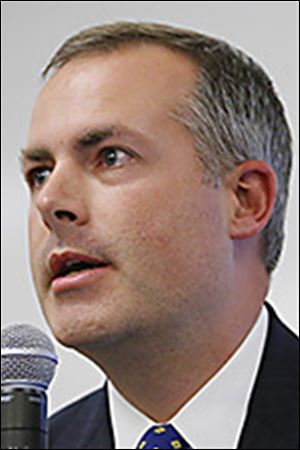
EDITORIALS
Fighting addiction
The Ohio General Assembly is responding to the crisis of opioid addiction in a rare bipartisan, proactive spirit
12/29/2013
Sprague
A heroin epidemic is afflicting Ohio, fueled by a pipeline of drugs from Mexico and other countries that have become purer, cheaper, and more addictive.
Ubiquitous prescription painkillers have aggravated the thirst for opiates, resulting in more deaths, more crime, more people with AIDS, and more-crowded prisons. An estimated 11 or more Ohioans die each week of heroin overdoses — more than 600 deaths last year, a figure that more than doubled from 2010.
Click here to read more Blade editorials.
To its credit, the General Assembly is responding to this crisis in a rare bipartisan and proactive spirit. A package of bills aims to expand treatment, improve education, and reduce the supply of prescription painkillers. The administration of Gov. John Kasich and Ohio Attorney General Mike DeWine, who has established a $1 million heroin unit, are also attacking the problem.
Opioid prescriptions have increased ninefold in Ohio since the late 1990s — and so have rates of drug overdoses. In Scioto County in 2010, nearly 10 million doses of opiates were prescribed, the equivalent of an incredible 123 doses for every man, woman, and child.
“This problem starts with prescription painkillers,” state Rep. Robert Sprague, (R., Findlay) told The Blade’s editorial page. As many as 80 percent of heroin users, he said, started with such drugs. Mr. Sprague, who heads a legislative study committee on prescription-drug addiction, said he resolved to act on the problem after he heard heartbreaking stories from some of his constituents.
“It has just devastated families,” he said. “There are very few people who haven’t been touched by this.”
Bills before the General Assembly, some sponsored by Mr. Sprague, should jump-start an overdue debate on opiate addiction next year. Several are no-brainers: expanding needle exchange programs for drug users, requiring school districts to provide information on opioid addiction in health curricula, expanding treatment and earmarking money for drug courts, and requiring prescribers of narcotics to give patents a fact sheet on the risks of addiction.
Other bills will need far more public testimony and thought. One of the most controversial would dramatically change medical care standards for treating chronic pain.
Among other things, it would generally prohibit doctors from prescribing opiates until patients had exhausted alternatives such as pain management clinics. Such a measure could create excessive red tape and prevent patients from getting needed medication to relieve extreme pain.
Overall, the bills do not provide for enough treatment and education, while potentially imposing too many regulations on medical professionals and patients. That said, the legislature ought to be commended for responding aggressively to this public-health crisis.
Even many well-intentioned doctors have not fully understood the dynamics of addiction and the medical community’s role in creating the problem. Ohioans remain largely ignorant of the dangers posed by prescription painkillers, their potential for addiction, and their similarities to street drugs such as heroin.
In Ohio, as in other states, feeding an opiate addiction with heroin has become as much as 10 times cheaper than illicitly buying painkilling pills, such as Vicodin and OxyContin, on the street.
Educating the public and medical community on the hazards of opioid addiction, expanding treatment, and enacting sensible reforms of how professionals prescribe opiates to manage pain are among the most important challenges facing the General Assembly and the Kasich administration next year.